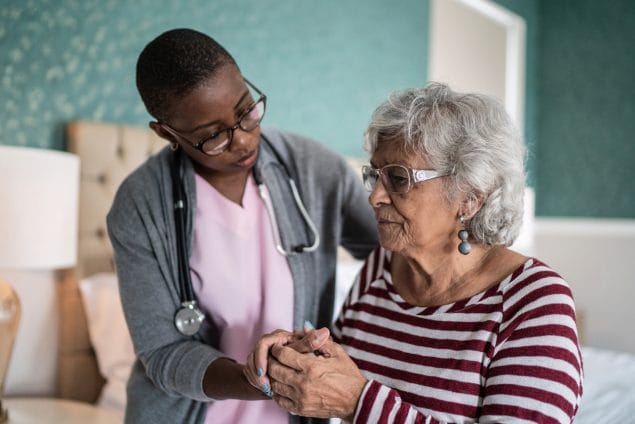Caregiving as a Public Health Issue

Caregiving is an important public health issue because it affects quality of life for millions of people. A caregiver may help another person with daily activities, such as bathing, dressing, paying bills, shopping, household maintenance, or transportation. Caregivers may also provide emotional support and help with managing a chronic disease or disability. Caregiving responsibilities can increase and change as the recipient’s needs increase.
Caregivers can maintain the health of their care recipients and help them stay in their homes and communities but may risk their own health if they ignore their own well-being. The Healthy Brain Initiative: State and Local Public Health Partnerships to Address Dementia: The 2023-2027 Road Map [PDF – 20 MB] can serve as a template for supporting caregivers by encouraging public health systems to collect data and use evidence-based policies and programs that support people providing care in their communities.
- Public health is concerned with improving the health of groups of people and populations in an equitable way.
- Public health seeks to eliminate health disparities, which are systematic and preventable differences in health between groups of people.
- Public health efforts are typically based on the socioecological framework, which shows that it is not just an individual’s choices and behaviors that matter but that family, community, and national policies and actions also influence health.
- Public health complements health care received in settings like hospitals and clinics by addressing factors that contribute to poor population health.
- Many local health departments offer vaccinations and nutrition services, and some provide more comprehensive prenatal and preventive or primary care, for example, Federally Qualified Health Centers.
- Any condition, exposure, event, or experience that negatively impacts health or quality of life at a population level is a public health issue.
- Measure the number of caregivers and document their experiences and health status, then use that information for action.
- Educate caregivers about health risks they may face, share information about effective programs to reduce stress or financial burden, and give them skills to support the care recipient and maintain their own health and well-being.
- Develop health-related awareness and education campaigns.
- Support community meetings and activities related to health advocacy.
- Draft or provide input on ordinances, policies, and laws that will affect caregivers and their care recipients.
- Assure that people have access to information and effective programs.
- Promote evidence-based interventions that reduce caregiver burden.
- Provide caregivers with training to complete medical tasks or manage difficult behaviors.
- Train caregivers to provide medical care or manage problem behaviors.
- Link caregivers and caregiver recipients to healthcare or service organizations or offering programs through entities such as local public health departments.
- Achieve “family-centered” care, making family caregivers part of health care delivery.
- Advocate for the widespread use of evidence-based support systems and services for family caregivers.
- Develop and support policies and programs that have a public health impact for caregivers.
- The HBI Road Map [PDF – 20 MB] communicates about caregiving as a public health issue and promotes available resources to providers and the public and provides information to empower caregivers. It addresses caregiving through several overarching actions, including investigating, communicating, and educating about Alzheimer’s disease, caregiving, and healthy aging through data.
- The Recognize, Assist, Include, Support, and Engage (RAISE) Family Caregivers Act required the RAISE Advisory Council to develop a national family caregiving strategy.
- The RAISE Advisory Council identified 26 recommendations across five goals that were delivered to Congress in the fall of 2021. These recommendations are the foundation of a national family caregiving strategy. The five goals are:
- Increase awareness of family caregiving
- Increase emphasis on integrating the caregiver into processes and systems from which they have been traditionally excluded.
- Increase access to services and supports to assist family caregivers.
- Increase financial and workplace protections for caregivers.
- Improve the quality of research and data collection.
- The 2022 National Strategy to Support Family Caregivers includes lists of actions that can be taken to support family caregivers. It also lists four cross-cutting issues for family caregiver supports:
- Person- and family-centered care.
- The impact of trauma on families.
- Advancing diversity, equity, inclusion, and accessibility.
- Elevating direct care workers as essential partners to the family caregiver.
In the future there will likely be fewer caregivers than people who need their help. Public health has a vital role in supporting caregivers so they can help care recipients remain in the community.
Public health frameworks like those used in the HBI Road Map series provide useful guidance for developing comprehensive public health strategies to support family caregivers. These frameworks consider the health and quality of life of both the caregiver and care recipient and recognize the role of the environment in their experiences. The HBI Road Map can be used as a template for planning public health action related to caregiving in other or more specialized areas and contexts. Its recommendations are specific to caregivers of people with dementia, but many of the actions could benefit other types of caregivers.